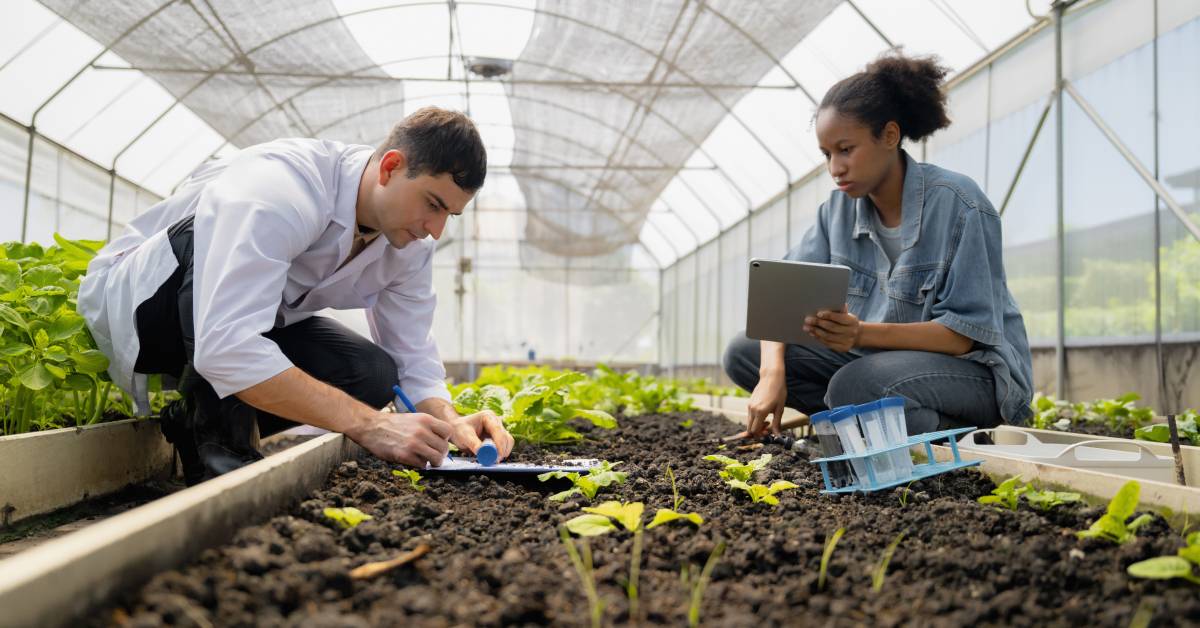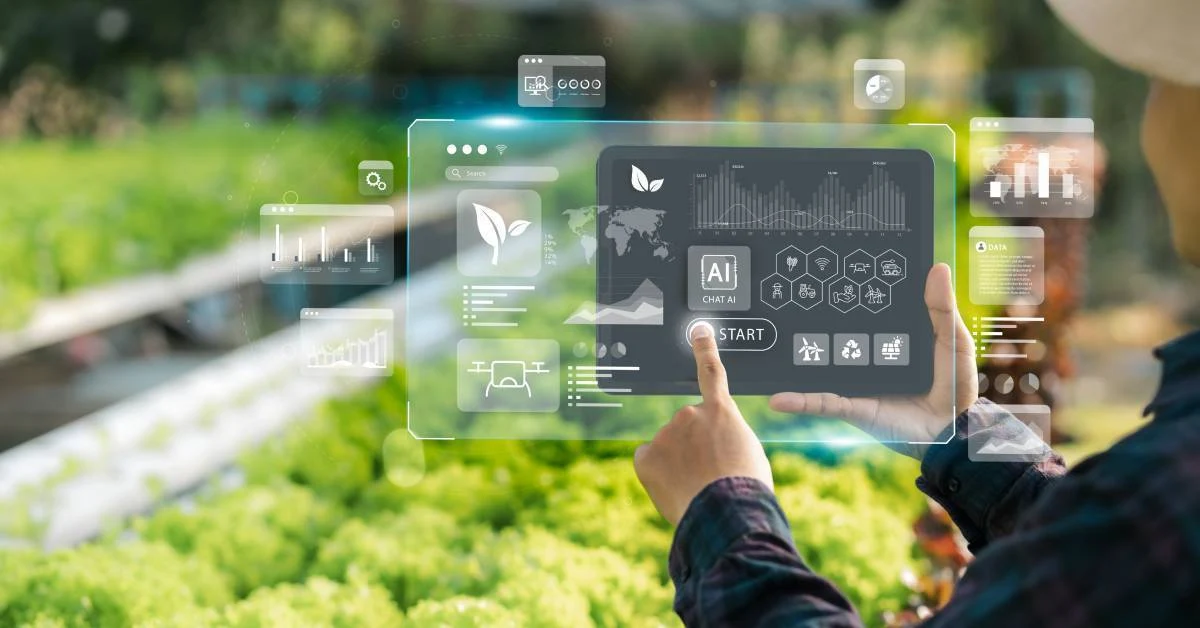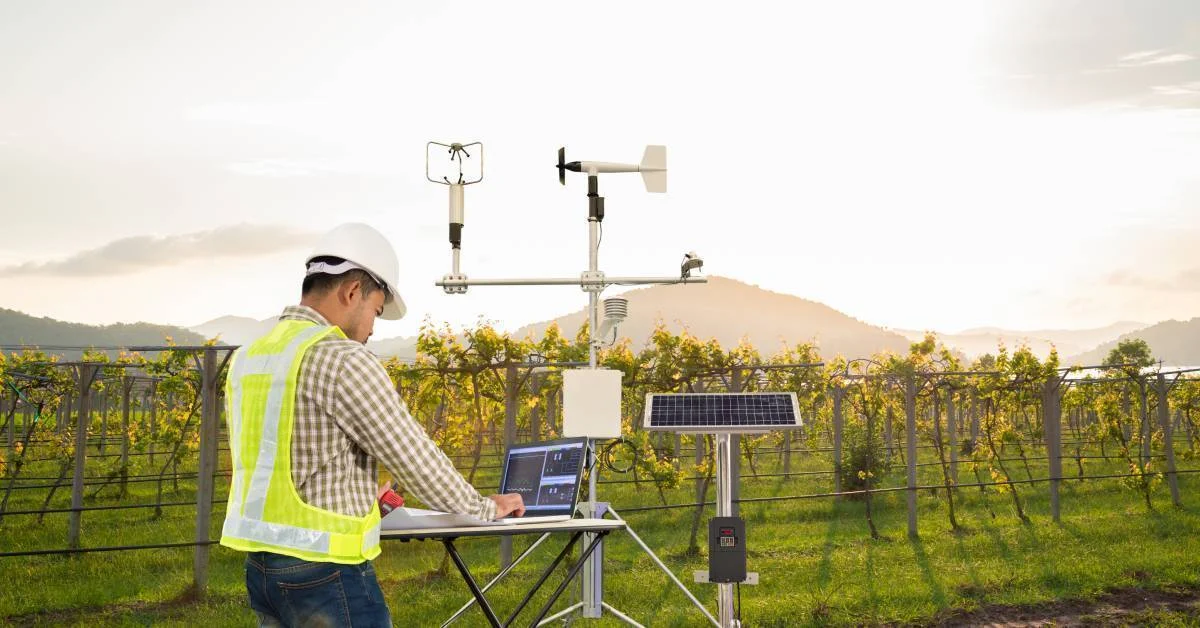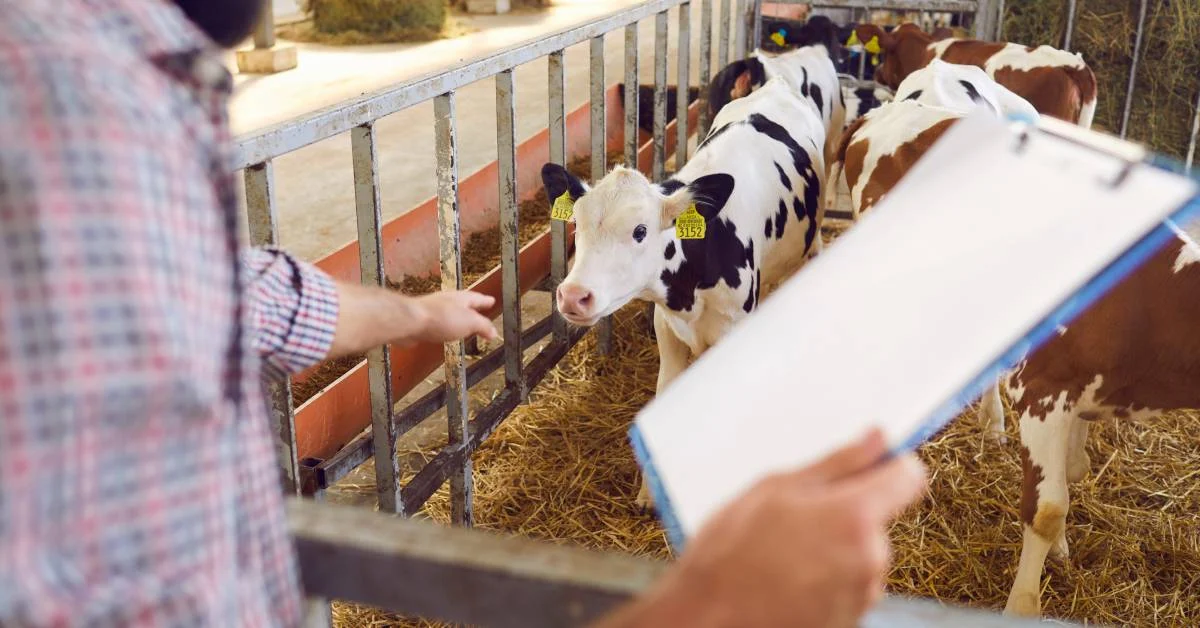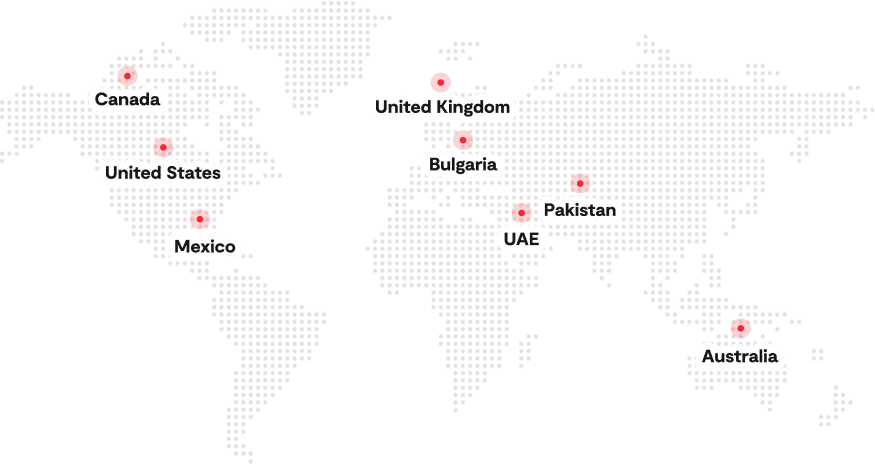Modern farming has blurred the lines between horticulture and agriculture, and the terms often get used interchangeably. Horticulture generally refers to the intensive cultivation of fruits, vegetables, flowers, and other high-value plants. By contrast, agriculture covers a broader range of crops (grains, fibers, oilseeds, etc.) and livestock.
However, as a farm or greenhouse owner, understanding the difference between agriculture and horticulture can directly impact your strategy and operations. Are you focusing on intensive horticulture farming in a greenhouse, or managing broad-acre crops and livestock?
In this guide, we’ll clear up what is horticulture vs agriculture and why it matters. You’ll learn how each field differs in scale, crops, techniques, and business models – helping you make informed decisions for your farm or greenhouse. So, let’s dig into the details.
What is Horticulture?
Horticulture is the science and art of cultivating plants, including fruits, vegetables, flowers, and ornamentals, typically on a smaller, intensive scale. The word comes from Latin hortus (garden) and cultura (cultivation), literally meaning garden cultivation. In practice, horticulture focuses on high-quality plant growth for food, aesthetics, or medicinal use, often blending scientific techniques with an eye for beauty.
It’s essentially a specialized offshoot of agriculture dedicated to “garden crops.” Unlike broad agriculture, horticulture is usually practiced on smaller plots or in controlled environments (greenhouses, vertical farms, etc.). Its importance lies in providing fresh produce and decorative plants, often using far less land than commodity farming.
Significant horticulture branches include:
- Olericulture (Vegetable farming): This branch of horticulture is all about vegetables. Olericulture focuses on the cultivation of edible herbaceous plants for the kitchen.
- Pomology (Fruit farming): Pomology is the fruit lovers’ domain. This branch deals with fruit farming, focusing on the cultivation of fruit trees and shrubs.
- Floriculture: Floriculture is the art and science of growing flowers and ornamental plants. This branch covers everything from greenhouse rose production to bedding plants and potted ornamentals.
- Landscape horticulture: This branch focuses on designing, installing, and maintaining landscaped environments. It blends plant science with design principles.
Together, these specialties show how horticulture focuses on quality, diversity, and value in plant production, from food crops that enrich diets to flowers that improve our living spaces.
What is Agriculture?
Agriculture is the broad practice of cultivating soil and raising crops and animals for food, fiber, and fuel. It encompasses all forms of farm production on a larger scale, from wheat fields and rice paddies to cattle ranches and fisheries. If horticulture is the garden, agriculture is the field – in fact, the term comes from Latin ager (field) and cultura (cultivation).
Agriculture involves managing land and resources to sustain human needs, using practices like plowing fields, sowing and harvesting crops, breeding livestock, and more. It has been the backbone of civilization for millennia, enabling stable food supplies and the rise of societies. Unlike horticulture’s narrower focus on plants, agriculture covers a much broader scope.
Key subfields of agriculture include:
- Agronomy (Crop/Soil Science): Agronomy is the cornerstone of crop-based agriculture. It deals with field crops (like cereals, pulses, oilseeds, and forage) and the soils they grow in.
- Animal Science (Animal Husbandry): Animal science, or animal husbandry, is the branch of agriculture focused on raising livestock and poultry. It covers breeding, feeding, and caring for animals like cattle, sheep, pigs, chickens, goats, or any farmed animal.
- Aquaculture: Aquaculture is essentially “underwater agriculture.” It refers to the farming of fish, shellfish, and other aquatic organisms for food and other products.
- Agroforestry: Agroforestry combines forestry and agriculture in a sustainable land-use system. It involves integrating trees or perennial woody plants into farmland, creating benefits for both crops and the environment.
7 Key Differences Between Horticulture and Agriculture
Horticulture and agriculture certainly overlap, but they differ in emphasis. So, understanding these differences will help you identify whether a given operation is more “horticultural” or “agricultural” in nature.

1. Scale & land use
One of the most evident differences is scale. Horticulture is usually small-scale and land-intensive, thriving in gardens, orchards, or greenhouses where multiple crops can grow in close proximity and even yield several harvests per year. It focuses on maximizing output per acre through careful, intensive management.
Meanwhile, agriculture operates on vast fields or pastures. Single crops like wheat may stretch across hundreds of acres with one seasonal harvest. While large farms benefit from mechanization and economies of scale, this approach often reduces crop diversity within the same plot.
2. Crops & outputs
The kinds of products each sector focuses on are another major difference. Horticulture emphasizes high-value, perishable crops such as fruits, vegetables, nuts, herbs, flowers, and ornamental products often destined for direct human consumption or aesthetic use. These crops are prized for their nutrition and market value, but demand precise handling.
However, agriculture covers a wider spectrum: staple grains like wheat, maize, and rice; oilseeds; fiber crops such as cotton; and livestock outputs including meat, dairy, and eggs. Aquaculture is also part of agriculture, supplying fish for food. These outputs form the backbone of diets and industrial raw materials.
3. Scope
The scope of horticulture vs agriculture refers to the range of activities each encompasses. The scope of horticulture is narrower, focusing only on plant cultivation and related post-harvest activities. It covers plant propagation, hydroponics, pruning, varietal improvement, and even landscape design, essentially the science and art of growing specialty crops under intensive care.
Agriculture, in contrast, encompasses a much broader mandate. It includes not only crop cultivation but also animal husbandry, aquaculture, and forestry. Agriculturalists may manage large-scale irrigation, operate heavy machinery, oversee livestock, and market bulk commodities, making agriculture the umbrella under which horticulture operates as one specialized branch.
4. Purpose
The purpose and end-use of horticultural vs agricultural production often diverge. Horticulture aims to enrich lives through fresh, nutritious produce, ornamentals, and medicinal plants. Its focus is on direct consumer benefits: vine-ripened tomatoes for flavor, floral arrangements for beauty, or herbs for wellness. These outputs often go straight from grower to consumer.
On the other hand, agriculture’s purpose is more foundational: feeding and clothing large populations. It produces staple foods like grains, meat, and dairy, along with fiber crops like cotton and raw materials such as biofuel feedstocks. Its mission is to meet global caloric and material needs at scale.
5. Techniques
The techniques and methods employed in horticulture versus agriculture can differ substantially due to the crops and scale involved. Horticulture often uses more precise, high-input techniques tailored to individual plants or small areas, whereas agriculture employs broad, mechanized techniques suited for large fields and herds.
Here are a few contrasts in technique:
Labor and Mechanization: Horticulture is labor-intensive, relying on pruning, grafting, and hands-on care. Agriculture uses machinery like tractors and combines to cut labor per acre.
Propagation & Breeding: Horticulture uses cloning, grafting, and hybridization to enhance plant quality and uniqueness. Agriculture breeds for yield, uniformity, and fast-growing crops or livestock.
Growing Environment: Horticulture thrives in controlled environments like greenhouses or hydroponics. Agriculture mostly occurs in open fields, now aided by GPS and precision irrigation.
Pest & Disease Management: Horticulture often applies IPM and biological controls on a small scale. Meanwhile, the use of precision technology in Agriculture is increasing, like AI sprayers, to cut chemical use.
6. Economic role
The economic roles of horticulture vs agriculture differ in many regions, though both are important. Agriculture is often the economic backbone of rural areas and a significant employment sector. In the U.S., agriculture and related industries contribute over $1 trillion to GDP (5%+ of the economy). These figures highlight the scale and importance of agriculture in feeding the world and powering economies. Meanwhile, horticulture, being more specialized, contributes significantly to value addition and employment in particular niches. For the record, U.S. horticulture operations sold $13.8 billion of nursery, floriculture, and specialty crops in 2019.
7. Environmental impact
When comparing agriculture vs horticulture differences in environmental terms, scale and practices lead to the different effects. Large-scale agriculture drives most deforestation (≈80–90%) and uses ~70% of freshwater, often with heavier synthetic inputs and runoff impacts. It also emits ~10–14% of global GHGs, with livestock around 14% alone. Horticulture’s smaller, often controlled systems can cut water use (e.g., hydroponics up to 90% less), enable IPM and biocontrol, and support biodiversity in polycultures and urban sites.
Summary of key differences:
| Aspect | Horticulture | Agriculture |
| Scale & Land Use | Small plots, greenhouses, or intensive urban farms; high yield per area. | Large fields or ranches require extensive land and economies of scale. |
| Crops & Outputs | High-value fruits, vegetables, herbs, and ornamentals | Bulk staples and livestock products. |
| Scope | Plants only | Crops + animals + forestry/aquaculture |
| Purpose | Quality and diversity | Quantity and staples |
| Techniques | Precise methods | Field-scale methods |
| Economic role | High revenue per acre; niche and local markets | Large GDP and employment share; commodity export economies. |
| Environmental impact | Often smaller footprint; sustainable methods | Greater resource use and environmental pressure. |
Agriculture vs Horticulture – Benefits and Drawbacks
Both horticulture and agriculture come with advantages and challenges. When deciding between horticulture and agriculture, which is better for a given situation, consider these pros and cons:
Benefits of horticulture:
- Produces nutrient-dense, high-value crops (fruits, vegetables, ornamentals) that can fetch premium prices.
- Efficient land use with greenhouses or vertical farming benefits to yield more per square foot.
- Short crop cycles and year-round harvests increase overall productivity.
- Supports local markets and food security with fresh produce.
- Innovative sustainable methods (e.g., organic or hydroponic systems) recycle water and reduce waste.
Drawbacks of horticulture:
- Very labor-intensive and requires technical skill (plant propagation, pruning).
- Highly perishable produce needs careful handling and storage (high post-harvest losses).
- It can require significant upfront investment (greenhouses, automation).
Benefits of agriculture:
- Provides large volumes of staple foods (grains, meat, dairy) at relatively low cost.
- Economies of scale: machinery and infrastructure spread costs over a huge output.
- Well-established supply chains and global markets ensure demand for commodities.
- Bulk production underpins food security and export earnings.
- Generally, lower labor costs per unit of land due to mechanization.
Drawbacks of agriculture:
- Consumes about 70% of global freshwater and can stress soil and water resources.
- Often, lower profit margins per acre (commodity prices are low).
- High environmental impacts: deforestation and greenhouse gases from intensive farming.
Horticulture vs Agriculture Examples for Real World Scenarios
Sometimes the best way to grasp the difference is through concrete examples. Let’s look at what typical horticulture vs agriculture examples might be in practice:
Horticulture examples:
- Greenhouse Tomato Production:
High-tech glasshouses use hydroponics and climate control to grow vine-ripe tomatoes year-round. Yields are up to 10x higher per acre than open fields, ensuring a premium supply. This intensive model shows horticulture’s focus on quality and controlled environments. - Hydroponic Lettuce Farms:
Urban warehouses grow lettuce and herbs without soil, using nutrient water and LED lighting. Hydroponics slashes water use while producing pesticide-free greens locally. These farms showcase controlled-environment agriculture for high-value leafy crops. - Vertical Strawberry Gardens:
Strawberries are grown in stacked pots or towers indoors or outdoors, maximizing space. Vertical systems simplify harvesting and reduce pest exposure. This model enables urban growers to deliver fresh berries efficiently. - Urban Rooftop Herb Gardens:
Restaurants and communities cultivate herbs and veggies on rooftops. These gardens provide hyper-local produce, insulation, and stormwater benefits. They highlight horticulture’s niche opportunities in urban, space-limited settings. - Orchid Nurseries:
Exotic orchids are propagated in greenhouses using tissue culture, requiring precise conditions. Grown for florists and retailers, they fetch premium prices. This example shows horticulture’s labor-intensive but high-value ornamental focus.
Agriculture examples:
- Grain Farms Producing Wheat or Maize:
Vast wheat and maize farms in the Midwest region of the U.S span thousands of acres, using heavy machinery for planting and harvesting. Their outputs supply flour mills, animal feed, and ethanol plants. Success depends on the weather and global commodity prices. - Integrated Crop–Livestock Systems:
These farms grow crops like corn and soybeans while raising cattle or sheep. Crops feed animals, and manure fertilizes fields, creating a nutrient cycle. This sustainable, traditional model diversifies production across plants and livestock. - Dairy Farms & Cotton Plantations:
Dairy farms range from 100 to 1,000+ cows, producing milk daily with high labor and capital needs. Cotton plantations cover large acreages, supplying fiber for textiles. Both illustrate agriculture’s scale, spanning food staples and industrial crops. - Aquaculture Ponds Raising Fish for Food:
Fish farms raise tilapia, catfish, or shrimp in ponds or cages, managing feed and water quality. This provides animal protein much like livestock, but via aquatic systems. Aquaculture is agriculture’s fastest-growing sector, expanding beyond traditional land farming.
Horticulture vs Agriculture – Which is Better for Your Farm or Greenhouse?
If you are a farm owner or operations leader, you might wonder, horticulture vs agriculture – which is better for my situation? The optimal approach will hinge on a variety of factors. Here are key decision criteria to help you evaluate what fits your farm or greenhouse best:
Assess Your Resources
Start by evaluating land, capital, and labor. Small plots favor horticulture due to high yield per acre, while large acreage suits broad-acre agriculture. Horticulture often needs higher upfront costs and more labor, but agriculture requires heavy machinery and scales better. Choose based on available resources, equipment, and your operational strengths.
Market Demand & Product Strategy
Analyze local demand and your strategy. Horticulture works well for fresh, organic, or niche products that can be branded and sold directly. Agriculture fits better where commodity crops dominate and storage/shipping networks exist. Urban proximity favors horticulture’s direct markets, while remote, large-acre settings align with bulk commodity farming.
Environmental & Regulatory Considerations
Climate, water, and soil dictate suitability. Horticulture thrives with drip irrigation and greenhouses in harsh climates, while agriculture may fit regions with open fields and hardy livestock. Policies, subsidies, or zoning may tilt the balance. Also consider certifications, export regulations, or labor rules, as these directly affect feasibility.
Measure Long-Term Sustainability
Think beyond immediate profits. Agriculture can degrade soil if not managed well, while horticulture adds diversity and resilience. Controlled environments can protect against climate change, but may face energy costs. Consumer demand is shifting toward sustainable, local food – horticulture or a hybrid approach can align better with these expectations.
Set Clear Business Goals
Your goals define the model. Horticulture offers higher margins but requires multiple enterprises and daily involvement. Agriculture brings bulk, simpler operations, but thinner margins. Match your choice with lifestyle, passion, and succession plans, whether you want a diversified niche farm, a commodity-scale operation, or a generational enterprise.
Use a Decision Matrix
Create a checklist of factors like land, capital, labor, market, and risk, then score horticulture vs agriculture. This structured approach reveals trade-offs and clarifies priorities. Simulate best- and worst-case scenarios to stress-test options. Involve family or partners to balance insights and ensure your decision aligns with both goals and realities.
Tech Innovations Shaping Horticulture & Agriculture
Technology is revolutionizing horticulture farming and agriculture, blurring their differences in some ways by introducing new efficiencies and capabilities. Whether you lean towards horticulture or agriculture, staying abreast of these innovations is crucial for competitiveness and sustainability. Here are some key tech trends and how they shape each field:
- Digital & precision farming: GPS-guided tractors, drones, and sensors let you apply water, fertilizers, and pesticides exactly where needed. Data from soil and plant sensors (moisture meters, satellite imagery) helps boost yields and reduce waste through precise irrigation and fertilization.
- Controlled-environment systems: Automated greenhouses, hydroponics, aeroponics, and vertical farms allow year-round production. These systems can dramatically save water and increase yields.
- Sustainable practices: Practices like cover cropping, integrated pest management, and organic farming are on the rise. Both sectors use these methods: agriculture to build soil health and horticulture for clean produce. Such methods recycle nutrients, build soil, and reduce chemical use.
- Climate-resilient crops & biotechnology: New crop varieties are bred or engineered for stress tolerance (heat, drought, pests). Biotechnology in agriculture accelerates the development of resilient wheat, rice, tomatoes, and other crops, helping farms adapt to climate change.
- Smart greenhouses & automation: Robotics and IoT are transforming farming. Automated irrigation and climate controls optimize plant growth in real time. Some greenhouses use robots to transplant and harvest. Even large fields see autonomous tractors and digital management systems, making both horticulture and agriculture more efficient.
Final Verdict
Horticulture and agriculture each bring unique benefits. Agriculture provides the bulk of staple crops and supports large-scale food systems; horticulture adds diversity, nutrition, and value through fruits, vegetables, and ornamental plants. Neither model is universally “better” – the right approach depends on your land, resources, and goals. Many farms blend both for growing grains alongside a greenhouse of vegetables or fruit trees on a mixed-use farm.Embrace innovation and sustainability: precision tools, climate-resilient crops, and efficient systems can boost productivity and reduce impact in either model. Stay adaptable and open to new practices by using the guidance above or consult Agtech experts to tailor a digital strategy that fits your farm or greenhouse’s vision and resources.
FAQs
Is A Farmer A Horticulturist?
Not always. A farmer may grow crops or raise animals, while a horticulturist specializes in cultivating plants for food, landscaping, or aesthetics. Horticulture is more plant-focused and usually smaller in scale.
Is Horticulture And Agriculture The Same Thing?
No. Agriculture covers large-scale plant and animal production, while horticulture is a branch that focuses only on cultivating fruits, vegetables, flowers, and ornamentals, often more intensively.
Which One Is Better, Agriculture Or Horticulture?
Neither is better universally. Agriculture ensures staple food and raw materials at scale, while horticulture produces high-value crops on smaller plots. The choice depends on your goals, resources, and market strategy.
Which Is More Profitable, Agri Or Horti?
Horticulture often earns higher profit per acre through specialty crops and niche markets. Agriculture offers lower margins per unit but benefits from scale and stability. Profitability depends on resources, market access, and risk appetite.

